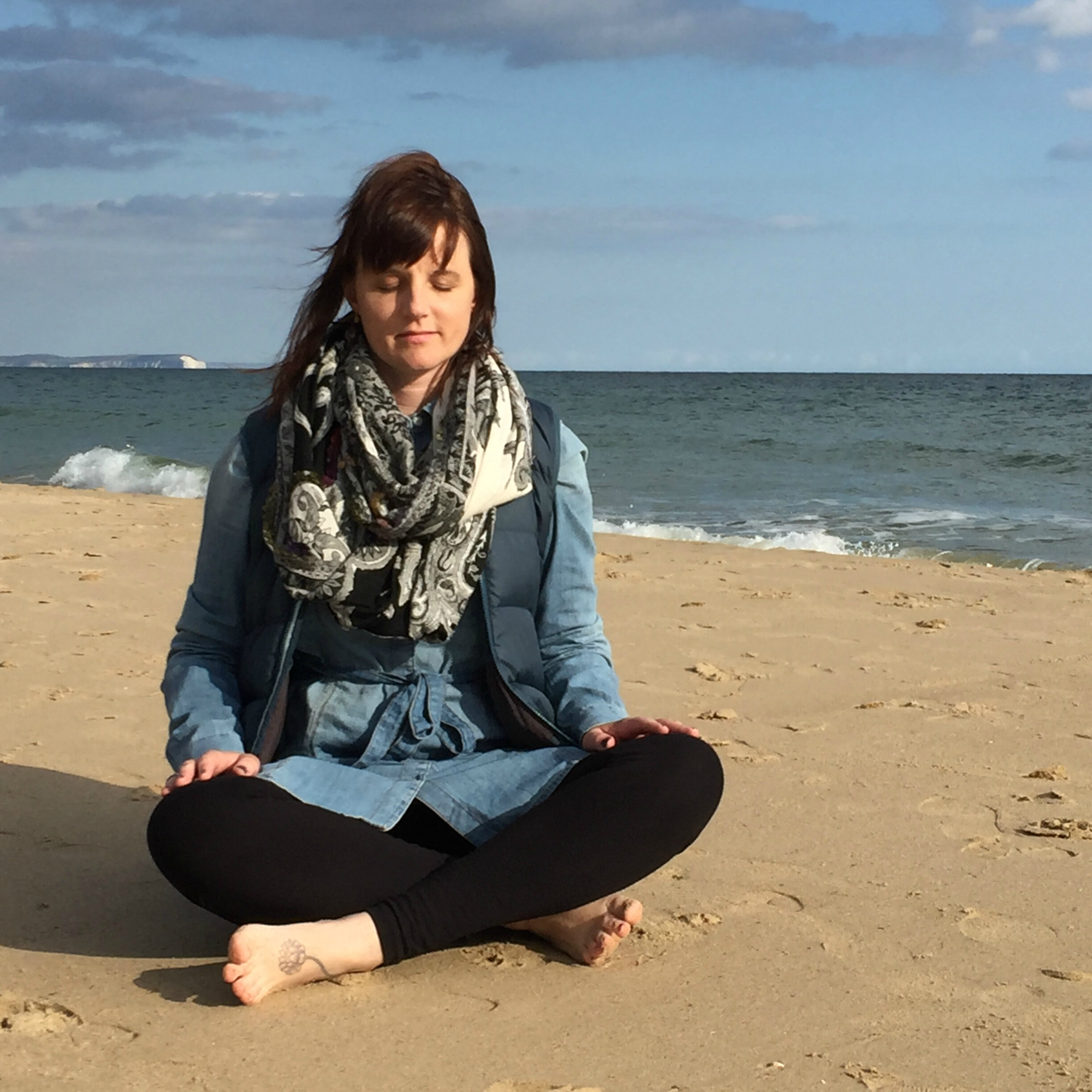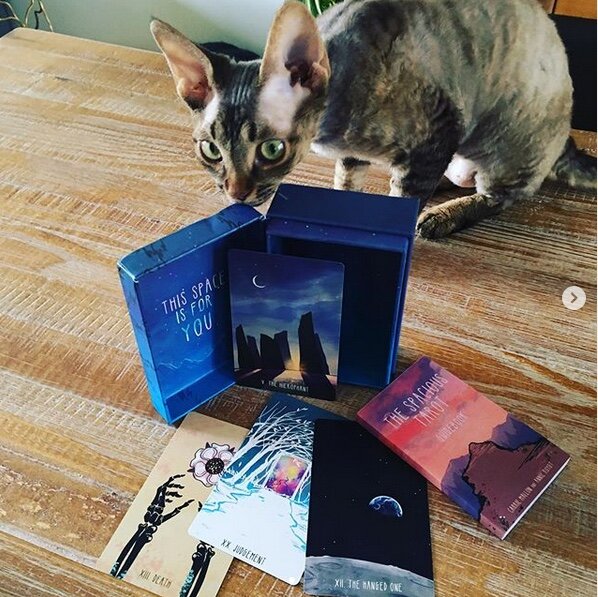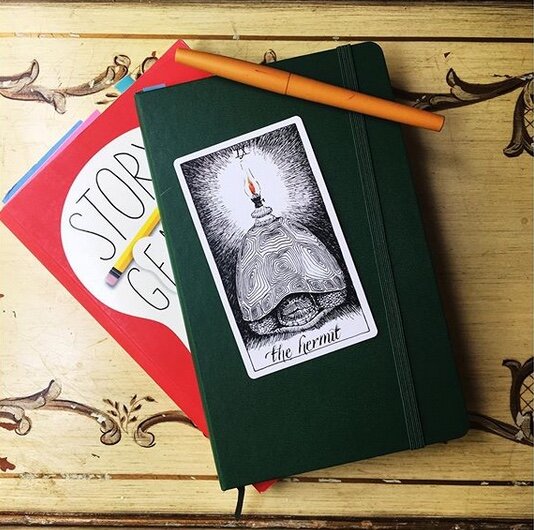One of the most useful tools I’ve discovered in working on developing a healthy writer mindset is re-framing challenging situations by simply asking:
“How is [ fill in the blank ] my teacher?”
This is mindfulness for writers: Viewing everything we do with attentive and kind curiosity so that we can get under the hood of our process and practice. It is only through this dogged effort of inner work and flexing our emotional intelligence muscles that we position ourselves to do our best storytelling.
When you begin working with this concept, you’ll see how this simple question works wonders in all life situations, from a difficult boss to an illness to the loss of a loved one.
Curiouser and Curiouser
When we get curious about the tough stuff—rather than resentful and frustrated—we pave the way for real workable solutions (and avoid a lot of unnecessary stress and pain through needless worry-on-a-loop). When we begin to see challenges as teachers, we take an active, rather than passive role, in our story.
A publisher with terrible author care could teach us how to better advocate for ourselves simply by being so awful we MUST get over our fear of confrontation or risk our books not getting the visibility they need to reach our readers.
A scathing review or critique partner’s critical notes could be our teacher for any number of things: teaching us how love ourselves and not care about outside approval, or how to grow a thicker skin.
In the above situations, we don’t usually think about what we’re learning, and how these happenings are invitations to growth. No, we freak out, call our best friends and narrate the drama, take to our beds and consider quitting writing altogether, or we turn the anxiety inward, which can result in plummeting self-confidence, depression, and a dry creative well.
Asking how challenging people and situations can be our teacher is more than seeing the silver lining. This questions isn’t about listing the things to be grateful for, such as the loss of work enabling you to have more time with your partner or kids. When you ask, “How is 2020 my teacher?” you’re seeing how the events of this year (and your responses to them) are shaping the person you are, illuminating parts of yourself that might need some work, and challenging you to grow.
A Case Study
Let’s say you didn’t write at all this year. You just couldn’t, not with the world being a dumpster fire. For many writers, this would be a cause for guilt, shame, increased self-doubt—you name it.
Writer A might respond by quitting altogether, or forcing themselves into a punitive writing practice to make up for lost time. She is, of course, side-eyeing all those assholes on Instagram who finished five books this year and also managed to learn how to make sourdough bread from scratch.
Writer B might list all the other important things they did and recognize that it’s okay not to write when the world is upside down. Perhaps they’ve already forgiven themselves and they’re not sweating it—they’ll try again next year. They felt that self-care was paramount and that meant not doing anything that required plots and action scenes.
But if Writers A and B were to ask, “How is 2020 my teacher,” both may draw the same conclusion: 2020 showed me that when there is chaos in the world, my writing is the first thing to go.
The takeaway lesson for Writer A might be that she recognizes that when she lets writing slide, she feels awful. Her mental health plummets, she loses her connection to self. So 2020 taught her—by showing, not telling—that in order to avoid losing her writing when she needs it most, she’s going to have to dig deep and figure out just what it was that caused her to let something so precious slip away. Maybe, after some deep journaling, she realizes that 2020 taught her that if she doesn’t have a dedicated time to write each day, the words won’t get written. Maybe it’s also teaching her she has to look at the weird guilt she feels when she wants to write instead of make dinner for her family. Why does she deny herself writing time, but protect the “me” time of her loved ones? Curiouser and curiouser.
Writer B might realize that she’d needed a break from writing and that only a pandemic would have broken her iron resolve to publish or die trying. Maybe before COVID, she’d been obsessed with her career, no longer caring about the heart of her stories so long as she could get a book deal. Maybe her relationships with her family—and herself—suffered and she was miserable all around. Perhaps 2020 revealed to Writer A that her true priorities aren’t book deals but being an active character in her own story. In 2021 it’s imperative she strike a balance between the two (writing and family) so that she can show up fully for all of her life.
Working with This Question
When you ask how something—2020, creative dry seasons, a particularly challenging book—are your teachers, you’ll want to have a journal handy. Note that while this is deeply helpful to work with while you’re experiencing a situation, it’s also very useful after the fact. I’m sure we’ll be feeling the ripple effect of 2020 for years to come.
1. Think about the last challenge you faced. How did you react in the moment? What was your takeaway after the fact?
2. Note the usual reactions you have to tough, stressful, challenging situations. Do you usually call someone immediately to rant? Do you take a run to clear your head? Do you indulge in a vice or two? Perhaps you have the anxiety on an endless loop. How does that make you feel? Is it workable? Is it a skillful use of your creative bandwidth?
3. Now, pause. Take a breath. Then ask, “How is [fill in the blank] my teacher?” 2020 would be a great thing to go with. You could also ask about your WIP, your writing in general, or your self-doubt. Your inner critic. Your fear or jealousy.
(Spoiler alert:
everything in the cosmos is your teacher.)
4. Journal: writing and writing and writing until you come to some of the lessons you’ve been given. Of course, like any good teacher, the lessons will reveal themselves over time. But there’s likely at least one or two things right off that you know you’re learning about yourself, your place in the world, your desires, your shadow side.
Snag my free Get Clear Workbook to do a deep dive into your process, practice, and goals.
5. Lessons don’t mean a thing unless we take them to heart and put them to action. So to really integrate the knowledge you’ve gotten, you’ll want to think about what steps or actions you might take. For example, if 2020 taught you that you can’t write when there are people around, it might be a good time to clear out that guest room nobody’s using and turn it into an office—with a door that closes and locks.
Professor 2020
No one will deny that 2020 was a shit year. For many writers, this year could be marked as a wash, as a lost year.
But whether you wrote a whole book or a single word, I know there is much that this year taught you, all of which you will be able to put into practice in 2021 and beyond.
What did it teach you about the kinds of stories you want to tell?
What did you learn about your relationship to your writing?
What did it teach you about the importance of story in our lives?
What did it show you about the kind of writer you are…and the kind you want to grow into?
What did it teach you about your desires, hopes, and dreams?
What did you learn about boundaries—with yourself and others?
Whether it’s getting clarity on your real priorities, on the kinds of stories you want to tell, or your relationship to your work, let this be the year that acted as a refiner, burning away what’s not working in and around you, and leaving behind a writer who is ready to put words that do right by the miracle into the world.
And that is how the student becomes the master.





























































